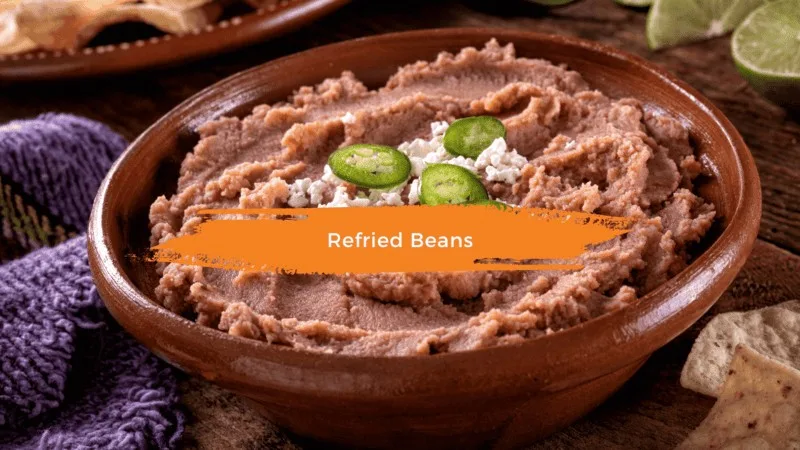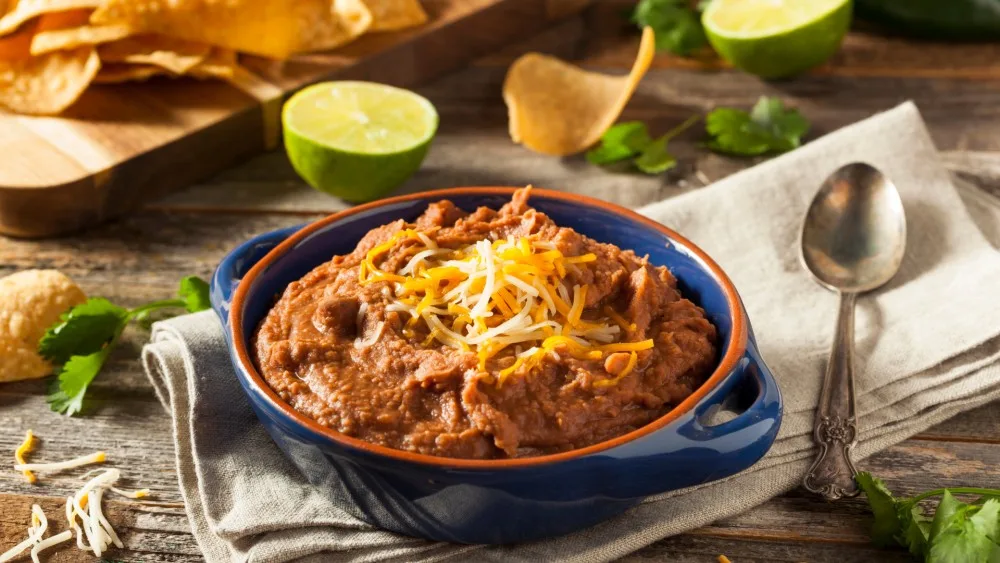Introduction Calories in Refried Beans
Calories in refined beans a mainstay of Mexican cooking for a very long time because of their rich flavor and creamy texture. Refried beans are a delicious addition to a variety of recipes, whether they are spread on a warm tortilla or used as a dip for crisp chips. But as we pay closer attention to what we eat, it’s important to comprehend the nutritional features of this favorite meal, including its calorie count. We’ll go into the topic of refried beans’ calories in this blog post and examine how you can consume them while eating a healthy diet.
Refried Beans Fundamentals
Let’s first define calories in refried beans before we discuss how many calories they contain. Beans are not actually fried twice, despite what the name would imply. The word “refried” comes from the Spanish word “refritos,” which means “well-fried.” Pinto beans are cooked and mashed to form traditional refried beans, which are then sautéed with onions, garlic, and occasionally lard or oil to provide a rich and savory side dish.
Portion size and calorie count (Refried Beans Calories)
Understanding portion size is essential to comprehending the nutritional value of any dish. Refried beans follow the same rules as other foods. refried beans‘ calorie value might change depending on the ingredients used and the serving size.
Traditionally prepared refried beans typically have 127 calories per 100 grams. It’s crucial to keep in mind that this serving size might not exactly represent how much you regularly eat. This portion size is frequently exceeded by many recipes and restaurant dishes, which can dramatically increase your calorie intake.
Calorie-Influencing Factors
Calories in Refried beans, might vary depending on a number of factors:
- Ingredients: The amount of cooking fat and the type of beans used might affect the caloric content. Instead of lard, pinto beans and healthier fats like olive oil can be used.
- Additives: Your dish’s overall calorie count may be raised by additional components like cheese, sour cream, or toppings like guacamole.
- Cooking Technique: Refried Beans Since you may regulate the quantity of fat and additives used during preparation, homemade refried beans may contain fewer calories than canned or restaurant versions.
Calories in Refried Beans: How to Include Them in Your Diet
Undoubtedly, calories in refried beans can be a component of a healthy diet. Here are some suggestions for enjoying them to the fullest without overindulging: Consider your portion proportions when eating. To prevent consuming extra calories, stick to the suggested serving amounts.
- Better Ingredients: Instead of using typical lard for making refried beans at home, choose healthier cooking fats like coconut oil or olive oil. Greek yogurt and low-fat cheese are other possible toppings. Refried beans can be incorporated into balanced meals that also contain lean proteins, veggies, and complete grains. This contributes to a balanced and delicious plate.
- Customize the toppings: To increase the flavor without packing on the calories, try salsa, chopped cilantro, diced tomatoes, or even a squeeze of lime.
- Nutrition Refried Beans: Refried beans’ nutritional value might change depending on the brand, recipe, and method of cooking. A serving of 1/2 cup (or 125 grams) of canned refried beans contains the following nutritional elements in general:
Note that these numbers are approximations and subject to change:
- Calories: between 100 and 150 kcal
- Amount of carbohydrates: 17–20 grams
- Amount of protein: 4-6 grams
- Fat: 2 to 5 grams
- Roughly 4-6 grams of fiber
- About 300-500 mg of sodium, depending on the brand and whether they are canned with additional salt.
Calories in Refried beans are frequently a good source of nutritional fiber and protein. If you add things like cheese, sour cream, or oils during preparation, the nutritional value may change. The nutrition label on the individual product you’re using or a calculation based on the ingredients you use in your own homemade refried beans will provide you with the most accurate nutritional information.
Refried Beans Health Benefits
Refried beans are a wonderful source of dietary fiber and are high in fiber. Fiber is essential for digestion, promotes bowel regularity, and can increase satiety, which can help with weight management.
- Protein: Beans, especially refried beans, are a good source of plant-based protein. Protein is essential for maintaining muscular mass, repairing tissues, and enhancing immune system function.
- Nutrient and Vitamin: Refried beans have a high nutrient density and are a good source of potassium, magnesium, iron, and B vitamins (such as folate and thiamine). These nutrients are necessary for the maintenance of general body processes, healthy blood, and the production of energy.
- Fat: Low in Saturated Fat Refried beans can be a reasonably low-fat diet option when made without excessively added fats. When compared to some animal-based protein sources that are higher in saturated fats, they can be a healthier option.
- Heart Health: By lowering cholesterol levels and the risk of heart disease, the fiber in refried beans can assist in enhancing heart health.
- Diabetes management: Refried beans are a healthy choice for those with diabetes because of their high fiber and protein content, which can help to balance blood sugar levels.
- Fiber Content: Refried beans’ high fiber and protein content can make you feel full and satisfied, which may help you control your portions and manage your weight.
Refried beans’ fiber encourages regular bowel movements and guards against constipation, supporting good digestion. Refried beans are a source of several vitamins and minerals, which support a variety of body activities and add to the overall nutritious intake.
It’s crucial to remember that how refried beans are prepared can affect their health advantages. Choose healthier cooking techniques, such as utilizing little extra fat and staying away from salty or sweet components. Look for refried beans in cans that don’t include any artificial substances or preservatives. Like with any cuisine, the key is moderation and balanced eating. For the best health results, include refried beans in a diversified and well-rounded diet.
Conclusion Refried Beans
Calories in Refried beans provide a tasty and culturally varied culinary experience that may be incorporated into your diet with knowledge and mindfulness, in conclusion. Although they are a source of calories, being aware of the elements that affect their nutritional value gives you the power to make wise decisions. Remember that achieving a balanced diet requires awareness of portion sizes and ingredient choices in addition to enjoying the
Flavors you appreciate. Calories in Refried Beans You may enjoy every taste guilt-free by choosing healthy cooking fats, experimenting with unique toppings, and including refried beans in well-rounded meals. So, whether you’re savoring the flavor of refried beans as a dip or indulging in a traditional bean and cheese burrito, experience the joy of this well-loved food while nourishing your health. With the knowledge you’ve received from this guide, you’ll be able to navigate the refried beans calorie landscape and make decisions that fit your nutritional objectives and taste preferences.






2 thoughts on “Calories in Refried Beans : A Comprehensive Analysis”